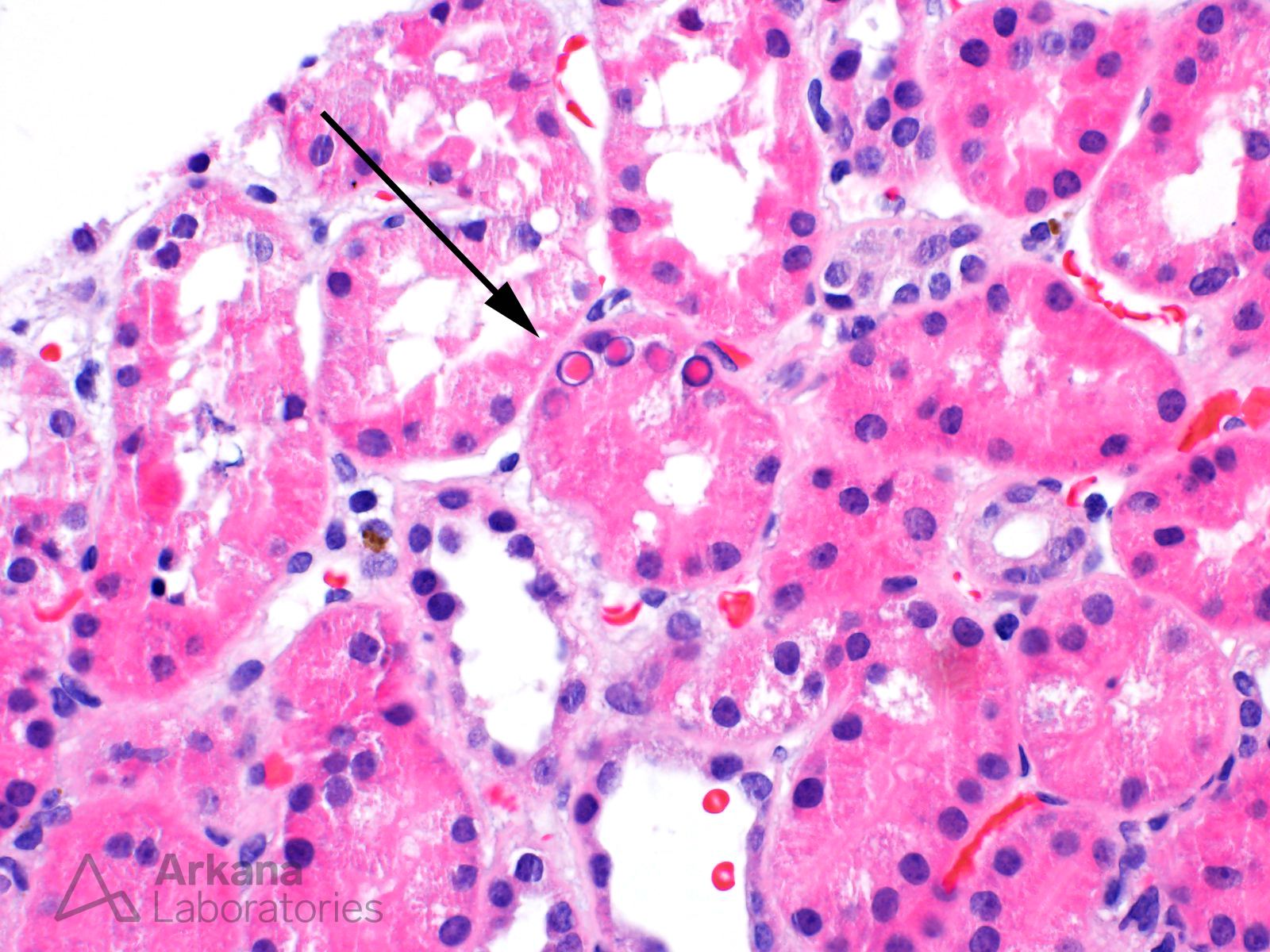The arrow in this image points to a cluster of tubular epithelial cells whose nuclei contain eosinophilic intranuclear inclusions characteristic of acute lead nephrotoxicity. In addition to inclusions, acute nephrotoxicity from lead and other heavy metals (e.g. platinum, mercury, gold, copper, iron, and lithium) is usually associated with morphologic features of acute tubular injury. As with all suspected cases of heavy metal toxicity, clinical correlation to assess for recent or past heavy metal exposure is required for an accurate diagnosis. In cases of chronic lead exposure, especially to low lead levels, the relationship between exposure and chronic kidney disease or end-stage renal disease (ESRD) has been debated. In a recent study, Evans et al. found no statistically significant difference in the incidence of ESRD among a large cohort of workers with documented lead exposure compared to a control group over a twenty year period.
Reference:
Evans M, et al. End-stage renal disease after occupational lead exposure: 20 years of follow-up.
Occup Environ Med. 2017 Jun; 74(6):396-401.
Quick note: This post is to be used for informational purposes only and does not constitute medical or health advice. Each person should consult their own doctor with respect to matters referenced. Arkana Laboratories assumes no liability for actions taken in reliance upon the information contained herein.



